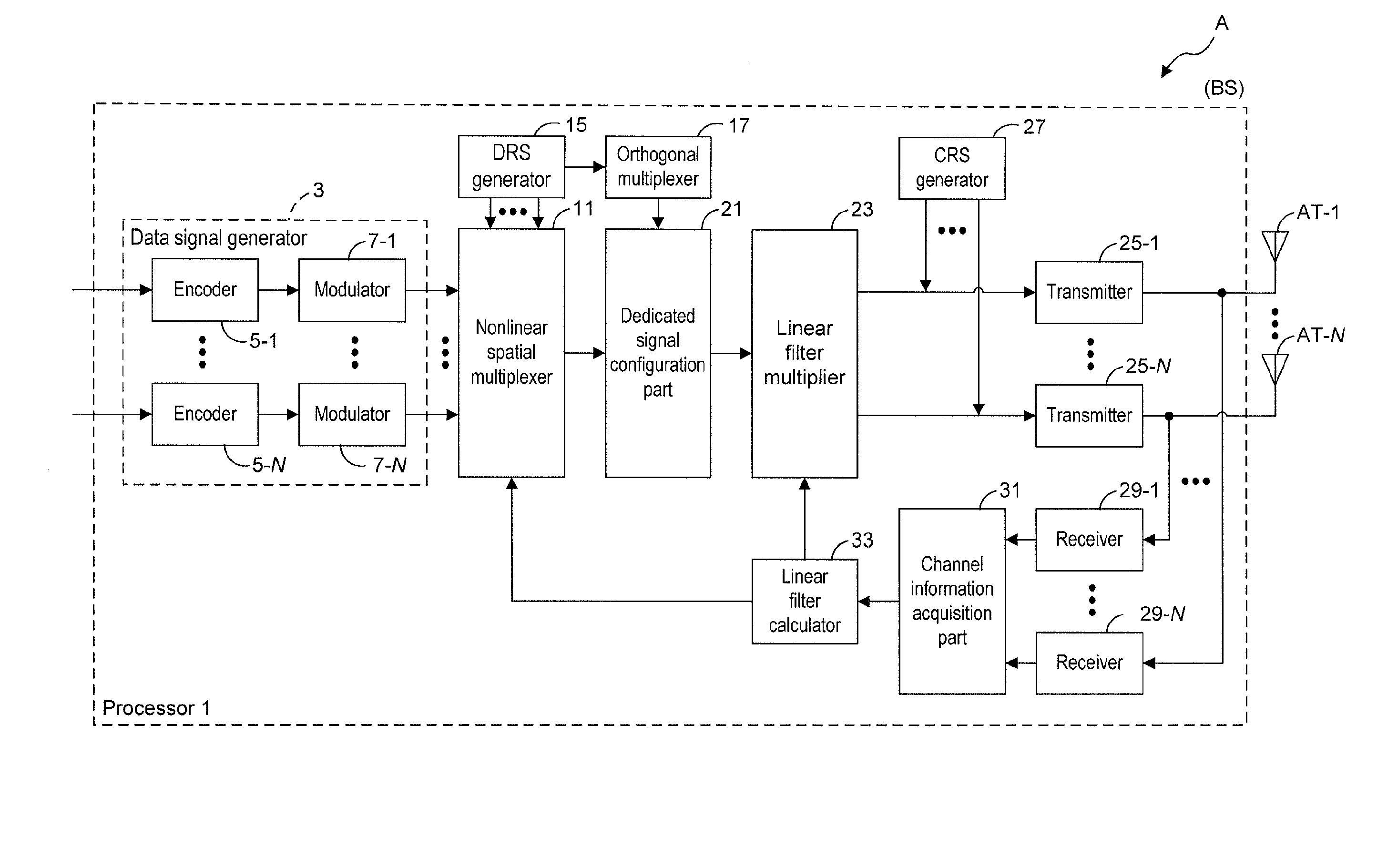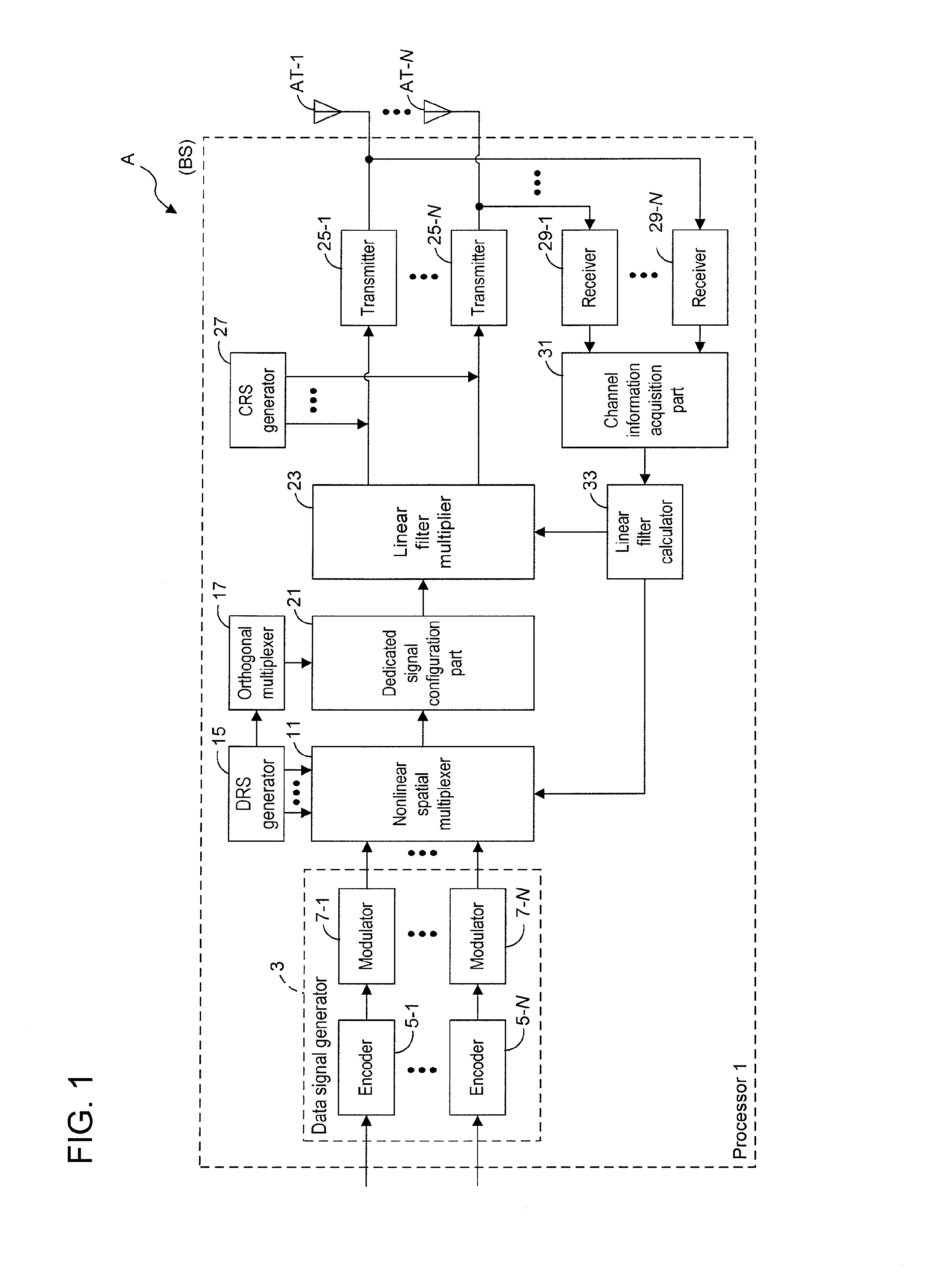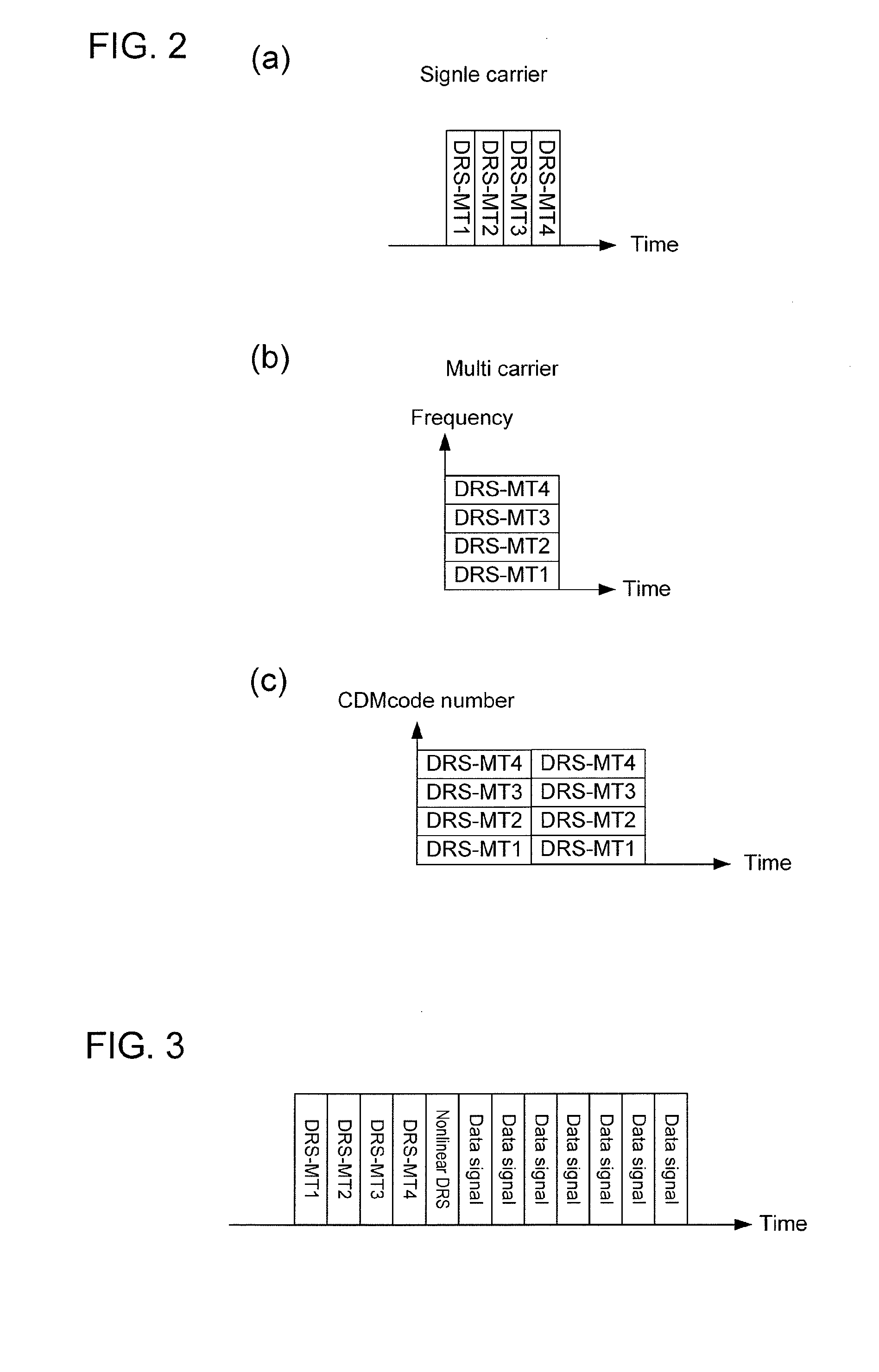Communication system, transmitter and receiver
a communication system and transmitter technology, applied in the field of mobile communication technique, can solve the problem that the mt cannot perform channel estimation, and achieve the effect of reducing the amount of radio resources and improving the accuracy of channel estimation
- Summary
- Abstract
- Description
- Claims
- Application Information
AI Technical Summary
Benefits of technology
Problems solved by technology
Method used
Image
Examples
first embodiment
[0110]In a first embodiment of the present invention, a base station (BS) transmits an orthogonal DRS to each mobile terminal MT, and also transmits DRSs for the respective MTs by nonlinear-spatial multiplexing like in the method used for data signals. The DRS is referred to as “nonorthogonal DRS.” The MT performs channel estimation by using both the orthogonal DRS and the nonorthogonal DRS. Hereinafter, a detailed configuration of this embodiment will be described with reference to the drawings.
[0111]1) Configuration of BS
[0112]FIG. 1 is a functional block diagram showing an exemplar configuration of a BS in this embodiment. While the conventional example in FIG. 26 has been described for the case where the number of MTs and the number of antennas of the BS are both two to simplify the description, the exemplar configuration in FIG. 1 will be described for a case including an arbitrary N number of MTs.
[0113]As shown in FIG. 1, a BS (A) generates common reference signals (CRS) for e...
second embodiment
[0162]A description has been given above in the first embodiment of a method of performing channel estimation by using one nonorthogonal DRS. In this embodiment, a description will be given of a method of performing channel estimation by combining multiple nonorthogonal DRSs.
[0163]Unlike the first embodiment, a frame configuration of this embodiment including data signals, orthogonal DRSs and nonorthogonal DRSs is as shown in FIG. 12, for example. In addition, a configuration of a BS of this embodiment can be shown by FIG. 1 as in the case of the first embodiment. A configuration of an MT is shown by FIG. 4A as in the case of the first embodiment. Note, however, that the configuration of the DRS channel estimation part 65 is replaced with a configuration shown in FIG. 13. Unlike FIG. 4B, channel estimation is repeatedly performed (reference numeral L) in FIG. 13 between a combined DRS estimation part 85a and a perturbation vector estimation part 83a. This processing is specifically ...
third embodiment
[0177]In the first and second embodiments, descriptions have been given of cases of single stream communication where the MTs each receive a single data signal at the same time point at the same frequency. The present invention is also applicable to a situation as shown in FIG. 28, where MTs each performing multistream communication are spatially multiplexed.
[0178]Hereinbelow, a description will be given of exemplar configurations of a BS and an MT in this case with reference to the drawings. Like in the first embodiment and the second embodiment, firstly basic single-carrier communication will be described, and then a case of expanding the communication to OFDM will be described as a modified example. In addition, although this embodiment will be described by using a case where each MT communicates using M streams at a time, as an example, the embodiment is not limited to this, and the number of communication streams may vary among the MTs.
[0179]Operations of the BS and the MT of t...
PUM
 Login to View More
Login to View More Abstract
Description
Claims
Application Information
 Login to View More
Login to View More - R&D
- Intellectual Property
- Life Sciences
- Materials
- Tech Scout
- Unparalleled Data Quality
- Higher Quality Content
- 60% Fewer Hallucinations
Browse by: Latest US Patents, China's latest patents, Technical Efficacy Thesaurus, Application Domain, Technology Topic, Popular Technical Reports.
© 2025 PatSnap. All rights reserved.Legal|Privacy policy|Modern Slavery Act Transparency Statement|Sitemap|About US| Contact US: help@patsnap.com



